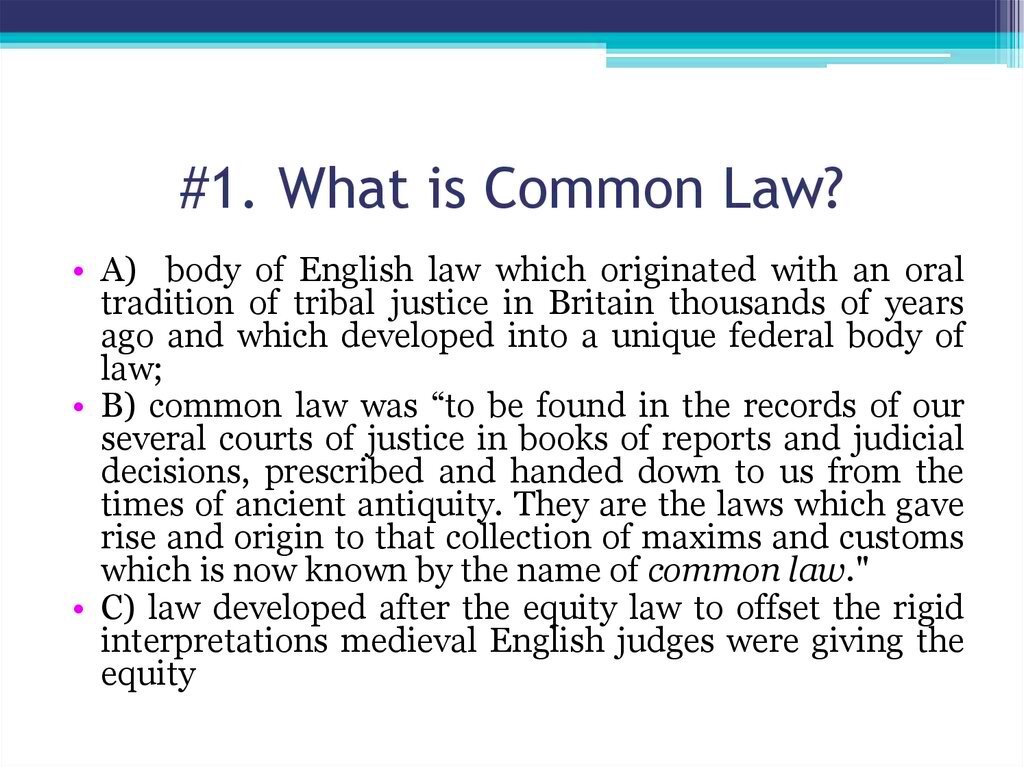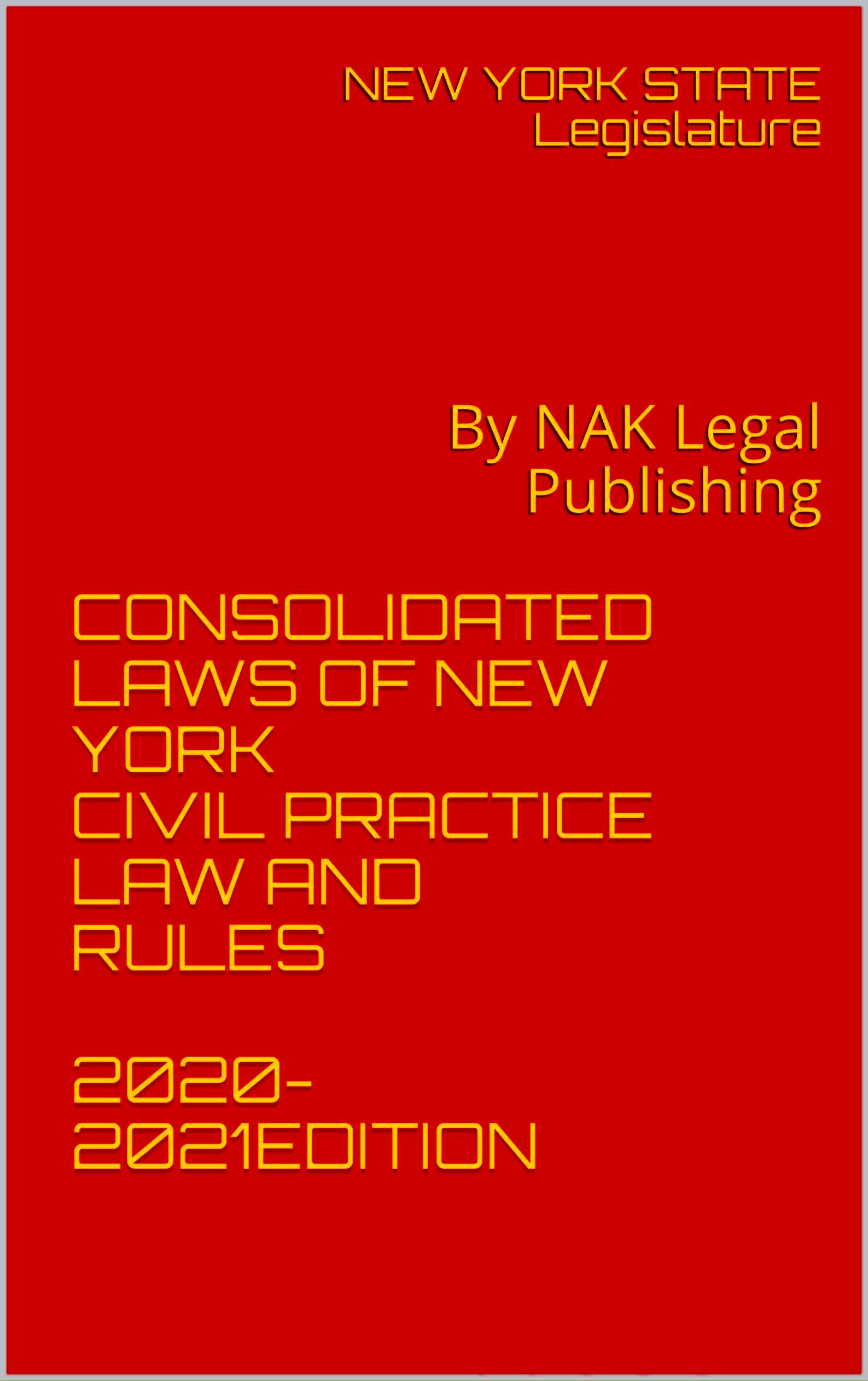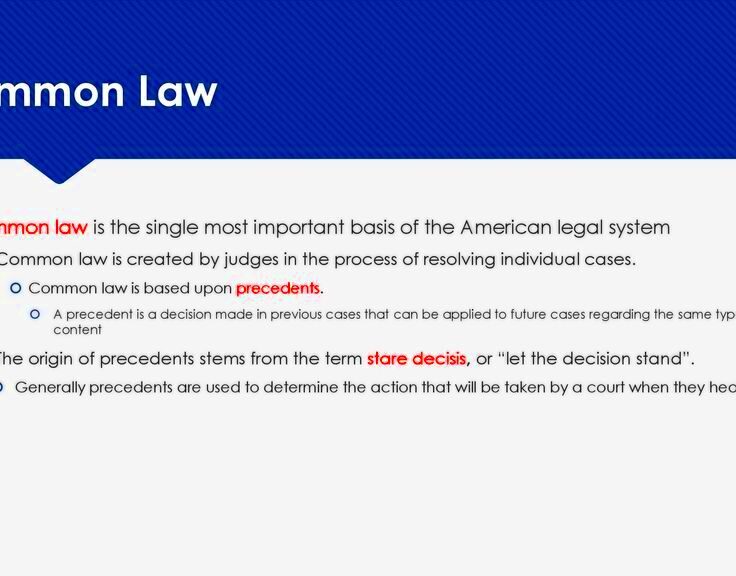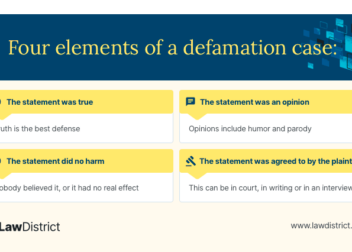The Role of Common Law in New York and Its Applications
Common law plays a significant role in the legal landscape of New York. It refers to a body of law developed through judicial decisions and precedents rather than statutes. This system has shaped many aspects of law and continues to influence court rulings today. Understanding common law is crucial for anyone interested in the legal system, as it governs various areas, including contracts, property, and torts. In New York, common law operates alongside statutory law, creating a unique blend that guides judicial decisions.
Historical Background of Common Law

The roots of common law can be traced back to England in the 12th century. After the Norman Conquest, King Henry II established a unified system of law to maintain order in the newly acquired territories. Key events in the development of common law include:
- The Establishment of Royal Courts: These courts handled disputes and set precedents that would influence future rulings.
- The Influence of Judges: Judges played a critical role in interpreting laws and creating legal principles based on previous cases.
- The Introduction of Jury Trials: The jury system provided a way for ordinary citizens to participate in the legal process, ensuring fairness.
As English settlers arrived in America, they brought common law with them. New York, one of the original thirteen colonies, adopted this legal system. Over time, New York’s courts have adapted common law principles to fit the state’s unique legal and social landscape.
Key Principles of Common Law

Common law is built on several key principles that guide its application in New York:
- Stare Decisis: This principle means “to stand by things decided.” Courts are obligated to follow precedents set by higher courts to ensure consistency in legal rulings.
- Case Law: Common law is developed through judicial decisions. Each ruling contributes to the evolving body of law, allowing courts to interpret and apply existing principles.
- Judicial Interpretation: Judges interpret statutes and constitutional provisions in the context of common law, providing clarity and adapting the law to modern circumstances.
- Equity: Common law incorporates equitable principles, allowing judges to provide remedies beyond strict legal rules, ensuring fairness in individual cases.
These principles not only define common law but also ensure that it remains flexible and responsive to societal changes. As New York courts navigate complex legal issues, they rely on these foundational concepts to deliver just outcomes.
Common Law vs Statutory Law

Understanding the difference between common law and statutory law is essential for anyone navigating the legal system. While both play crucial roles, they originate and operate differently. Here’s a simple breakdown:
| Aspect | Common Law | Statutory Law |
|---|---|---|
| Origin | Developed through court decisions and precedents. | Created by legislative bodies through statutes. |
| Flexibility | More flexible, adapting over time through judicial interpretations. | More rigid, as it requires formal processes to amend or repeal. |
| Examples | Contract disputes, torts, and property law. | Criminal laws, tax laws, and traffic regulations. |
In New York, both systems coexist, often interacting in legal cases. For example, a judge may rely on common law precedents to interpret a statutory provision. This relationship ensures that the law remains comprehensive and adaptable to evolving societal needs.
Applications of Common Law in New York Courts
Common law plays a vital role in New York courts by guiding decisions in various legal matters. Its application can be observed in several areas:
- Contract Law: Courts often refer to common law principles when resolving disputes related to contracts, including issues of enforceability and breach.
- Tort Law: Common law shapes personal injury cases, where judges rely on precedents to determine liability and compensation.
- Property Law: Disputes over real estate often invoke common law principles regarding ownership rights and obligations.
Judges in New York frequently use common law to interpret laws and resolve cases, allowing for a nuanced approach to justice. This reliance ensures that rulings reflect the complexities of individual circumstances while adhering to established legal standards.
Impact of Common Law on Legal Precedents
Common law significantly impacts legal precedents in New York and beyond. Precedents are previous court decisions that guide future cases, creating a consistent legal framework. Here are some key points regarding this influence:
- Consistency: The principle of stare decisis ensures that similar cases receive similar treatment, fostering fairness and predictability.
- Evolution: As societal norms and values shift, common law precedents adapt, allowing the law to remain relevant and applicable.
- Judicial Discretion: Judges have the discretion to interpret and apply precedents, enabling them to consider unique circumstances in each case.
In New York, common law precedents have shaped significant legal outcomes, influencing everything from civil rights to business regulations. The ongoing dialogue between common law and contemporary issues ensures that the legal system remains dynamic and reflective of current societal values.
Challenges in Applying Common Law
While common law has been a cornerstone of the legal system, applying it comes with its own set of challenges. These challenges can affect how justice is administered in New York and beyond. Here are some key issues:
- Changing Social Norms: As society evolves, so do the values and expectations regarding justice. What was once considered acceptable may no longer be relevant, making it difficult for courts to apply outdated precedents.
- Complexity of Cases: Many modern legal issues are multifaceted, involving technology or international elements that traditional common law may not adequately address.
- Inconsistent Interpretations: Different judges may interpret the same precedent in varying ways, leading to inconsistencies in rulings across courts.
- Limited Resources: Courts often face resource constraints, including time and personnel, which can hinder thorough case analysis and the application of nuanced common law principles.
These challenges require ongoing dialogue among legal scholars, practitioners, and lawmakers to ensure that common law remains effective and relevant in a rapidly changing world.
Future of Common Law in New York
The future of common law in New York is poised for transformation as the legal landscape continues to evolve. Several trends and developments may shape its trajectory:
- Technological Advancements: With the rise of technology, courts may increasingly rely on common law principles to address issues related to digital privacy, intellectual property, and online contracts.
- Interdisciplinary Approaches: Legal practitioners are beginning to incorporate insights from fields like psychology and sociology, which can inform common law applications and lead to more comprehensive rulings.
- Legal Reforms: Ongoing discussions about reforming various aspects of law may lead to adjustments in how common law is interpreted and applied, particularly in areas like family law and criminal justice.
Overall, the adaptability of common law allows it to respond to emerging challenges and societal shifts, ensuring its continued relevance in New York’s legal framework.
FAQs about Common Law in New York
If you have questions about common law in New York, you’re not alone. Here are some frequently asked questions that can provide clarity:
- What is common law? Common law is a body of law developed through judicial decisions and precedents rather than through statutes. It evolves based on case rulings.
- How does common law affect my legal rights? Common law can influence various aspects of your legal rights, especially in areas like contracts, torts, and property disputes.
- Can common law change? Yes, common law evolves over time as judges make new rulings and as societal values shift, allowing for adaptation to modern issues.
- How do courts use common law? Courts in New York rely on common law principles to interpret statutes, resolve disputes, and establish legal precedents for future cases.
Understanding these aspects of common law can help you navigate the legal system more effectively, whether you’re involved in a case or simply looking to learn more.
Conclusion on the Role of Common Law in New York
Common law has played a vital role in shaping New York’s legal landscape. By providing a flexible framework for interpreting laws and resolving disputes, it complements statutory law and ensures justice is served in a manner that reflects societal values. As New York continues to evolve, common law will remain essential, adapting to new challenges and incorporating changes in social norms. This adaptability is crucial for addressing complex legal issues, making common law an enduring pillar of the state’s judicial system. Understanding its principles and applications is essential for anyone looking to navigate the legal landscape effectively.


